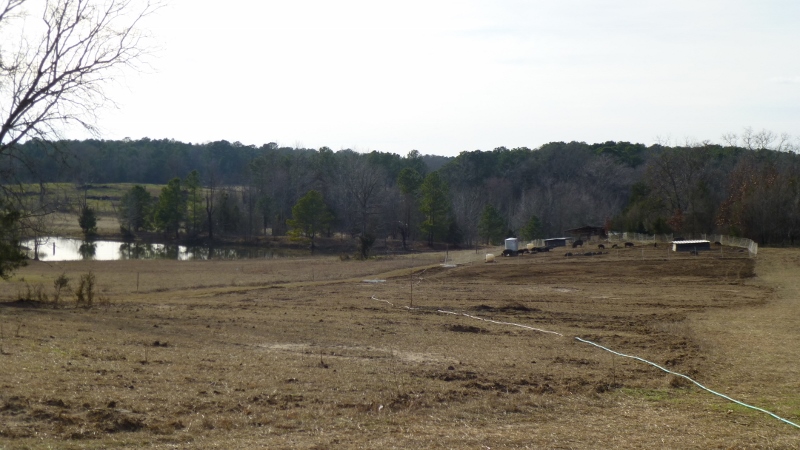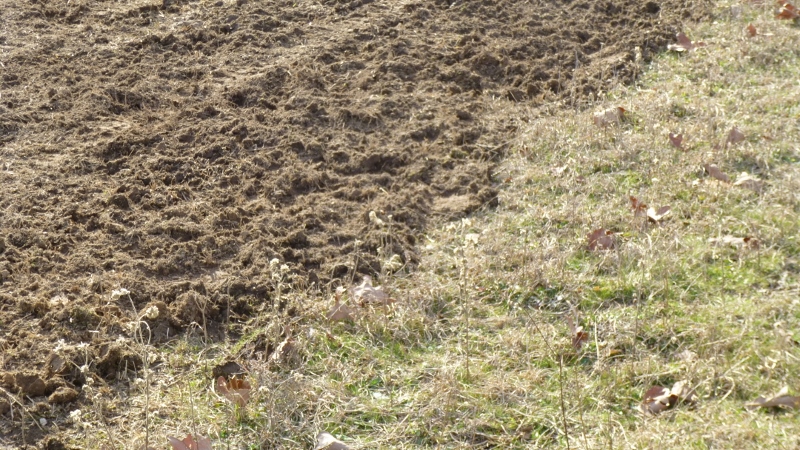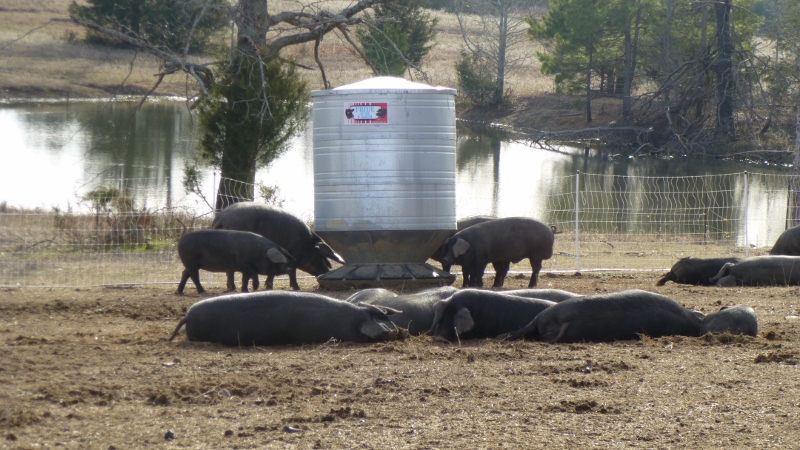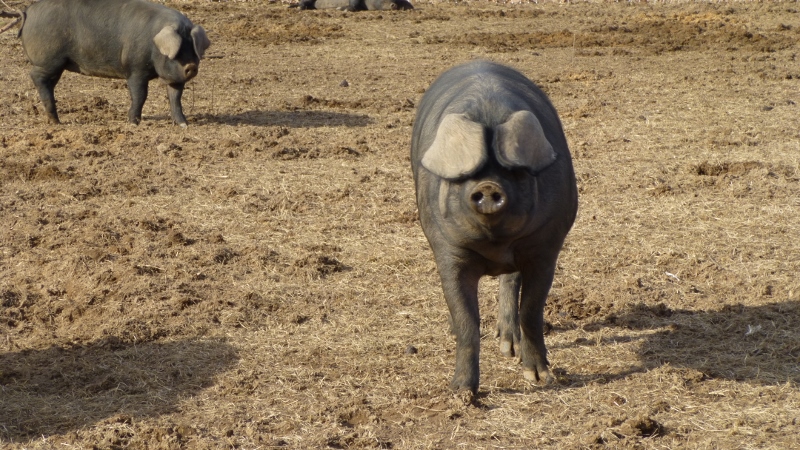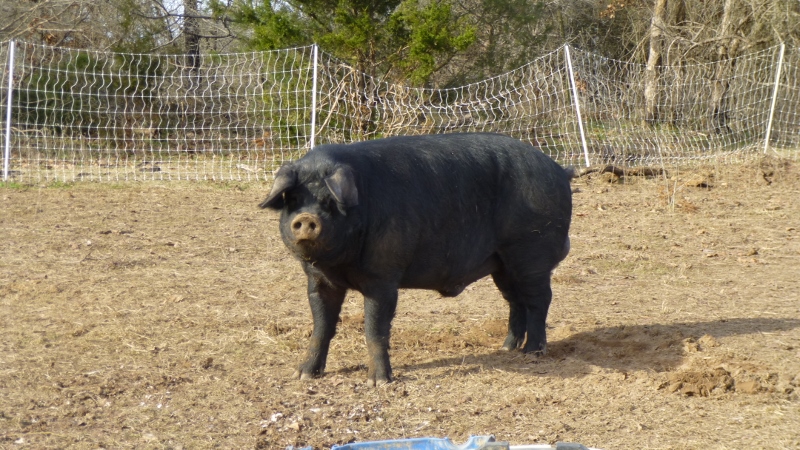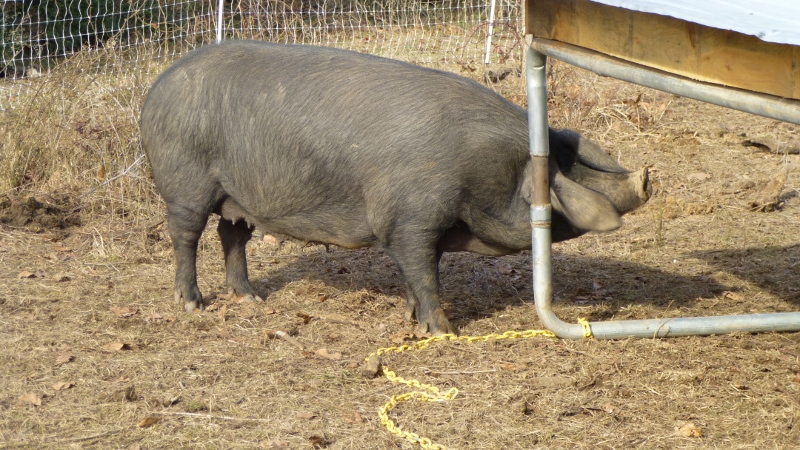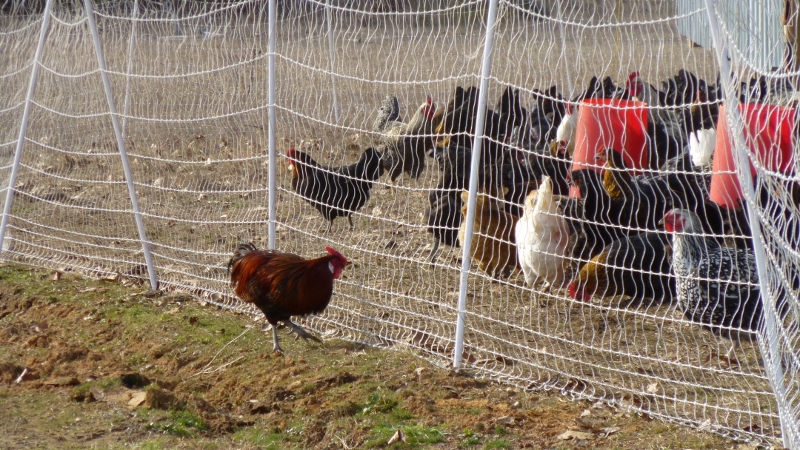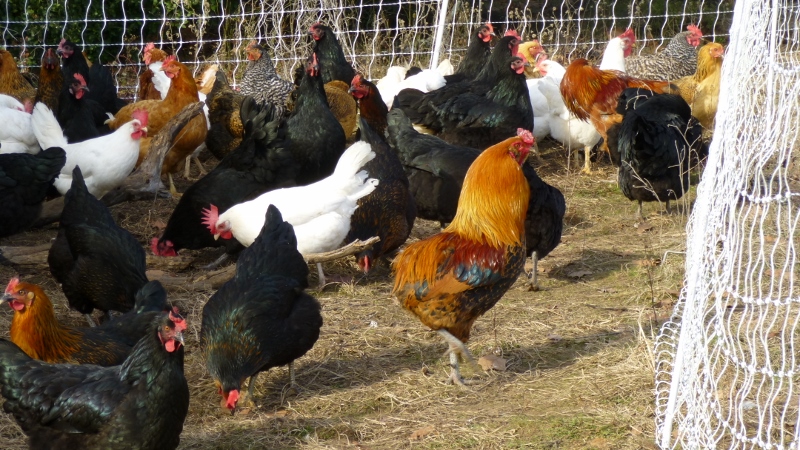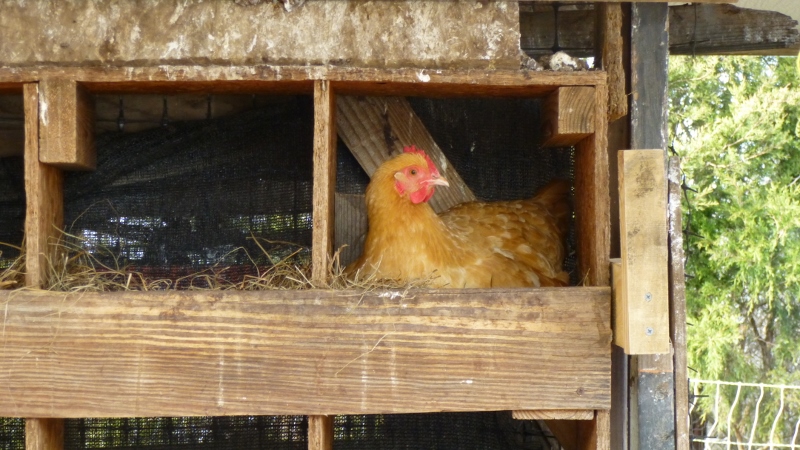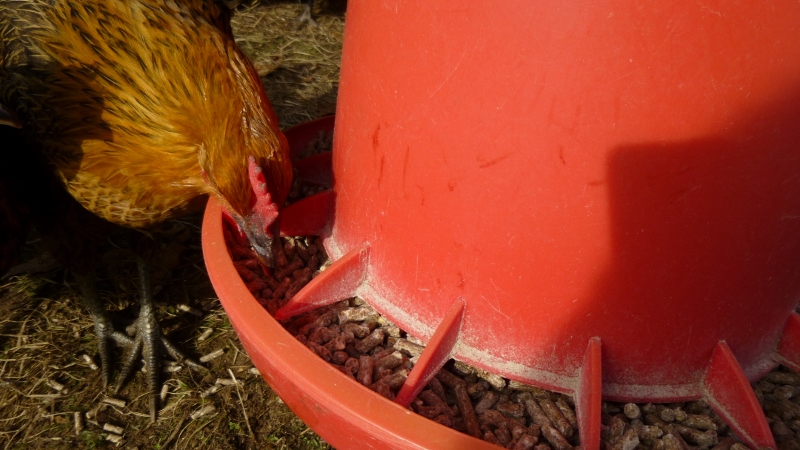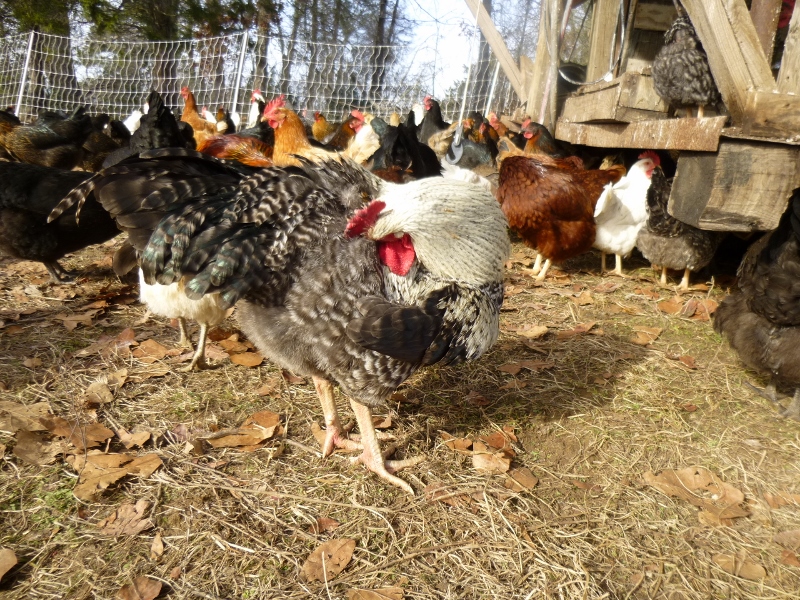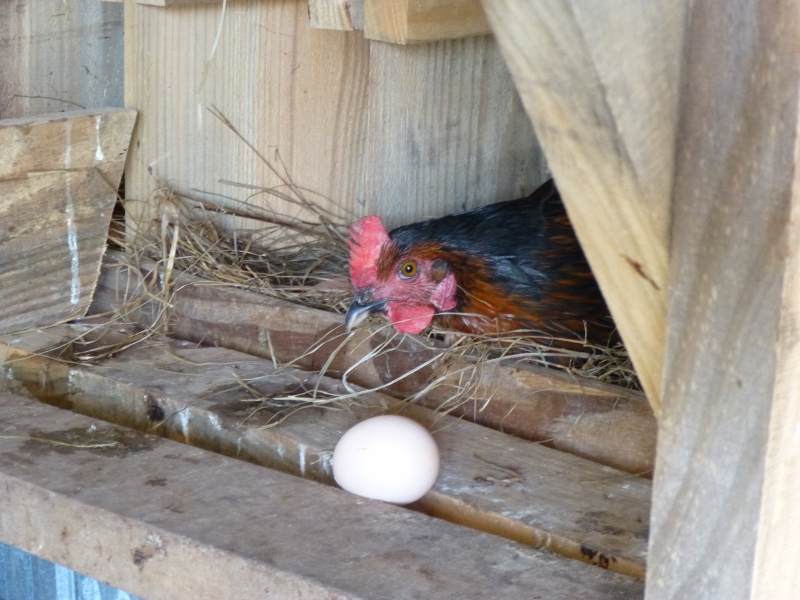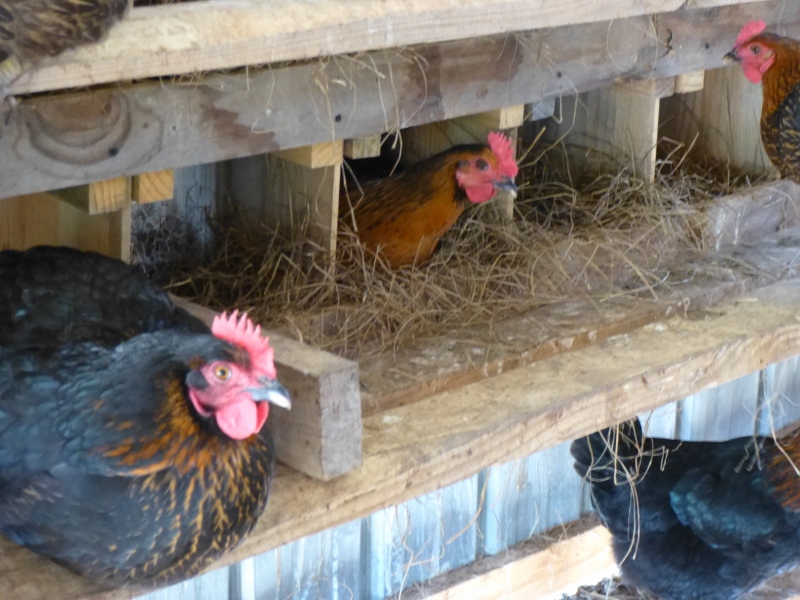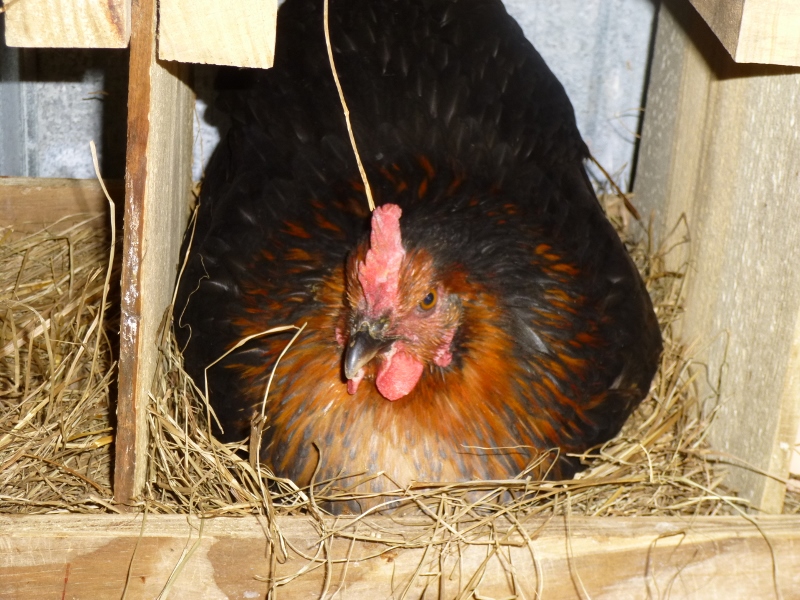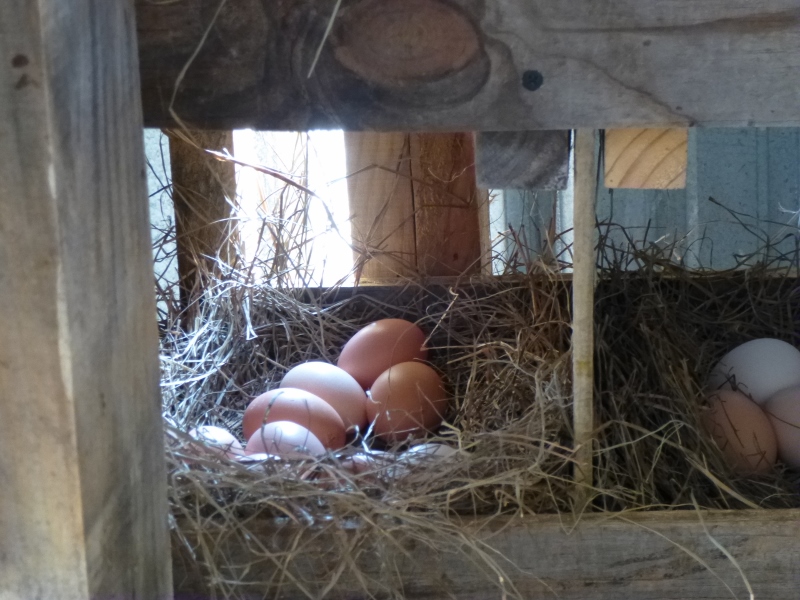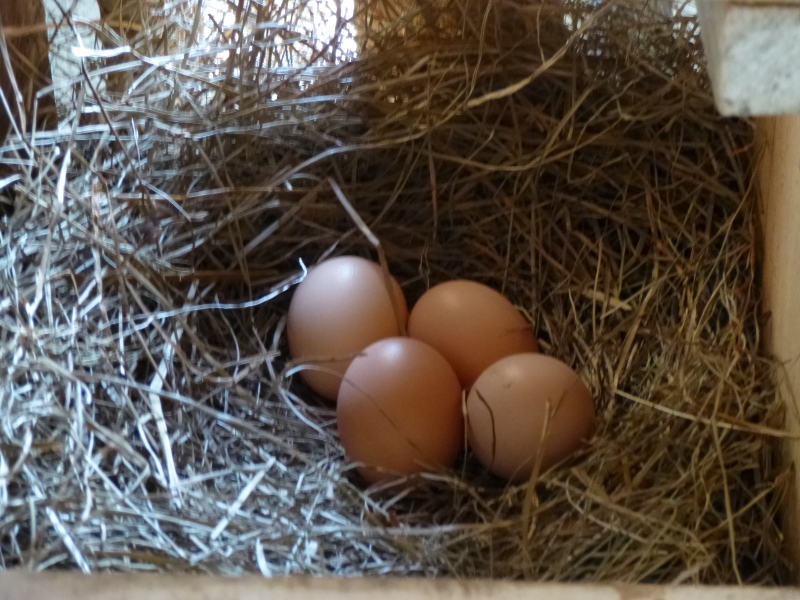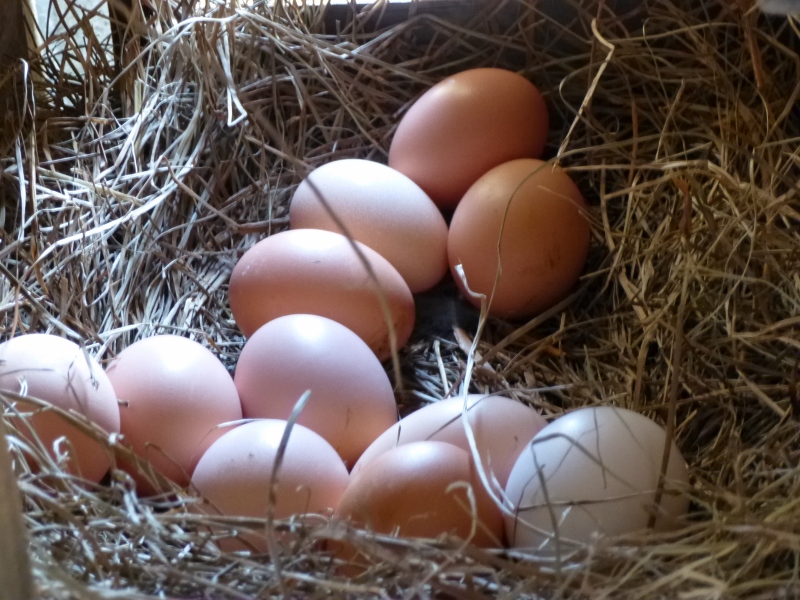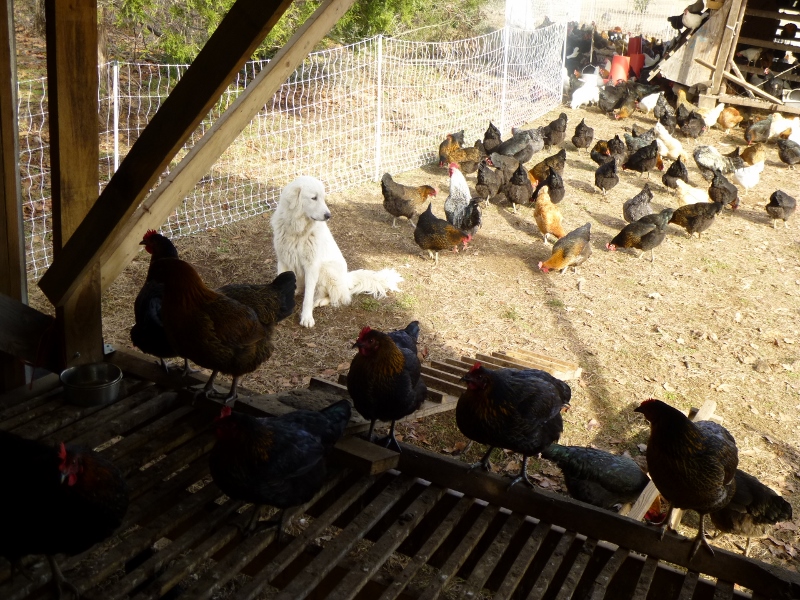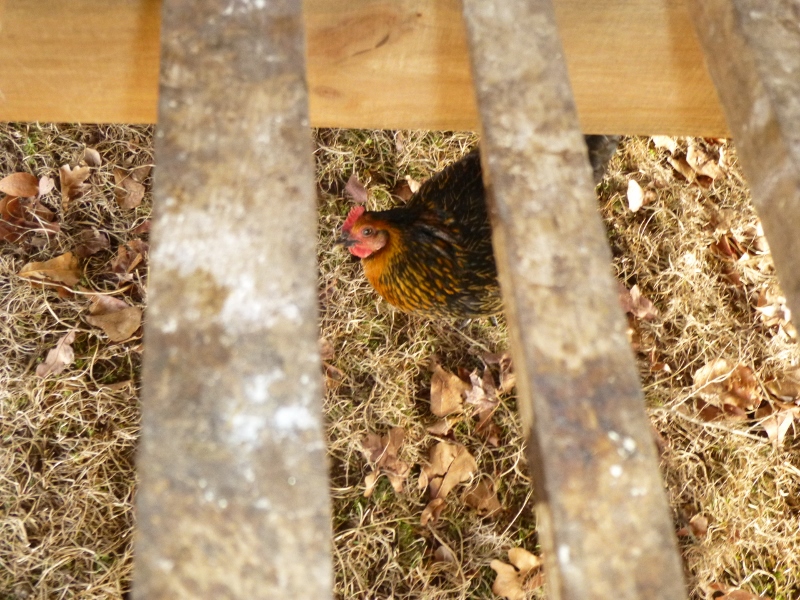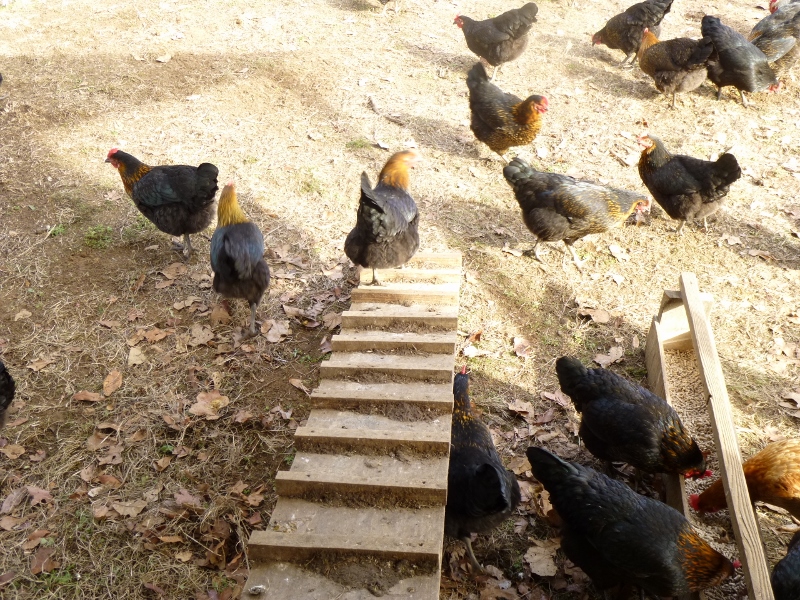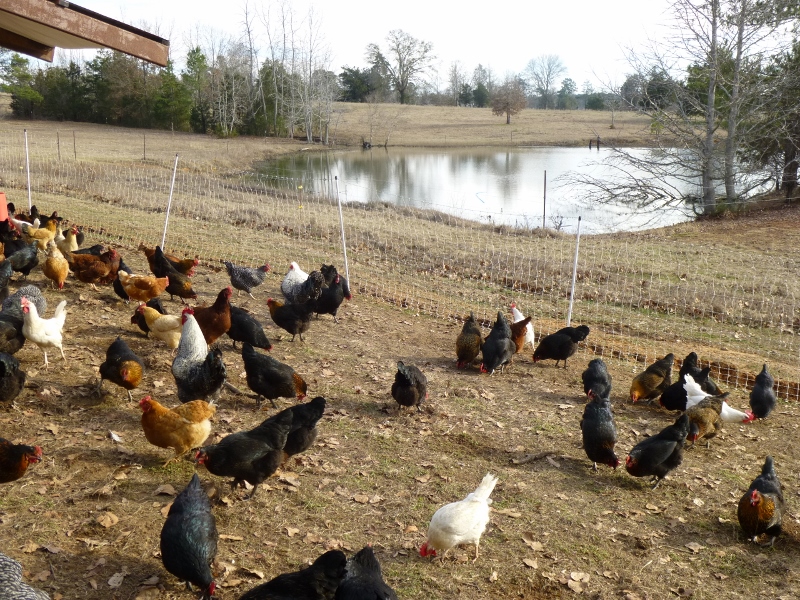Perhaps many of our readers know us just enough to know that we produce yummy meats and eggs, but not much more than that. Well, let me introduce you to a bit of our kookiness by sharing this fun story. Most of the year, our 185-acre ranch is run by Matt alone, with seasonal help through our internship program. I help with farmy stuff occasionally, with Matt’s parents serving as our wonderful on-farm babysitters and weekend chore help. I run the office and sales, answer the phone, do the bookkeeping. Matt manages the animals, orders the feed, fixes the stuff. Many people are surprised to learn that we’re not a huge operation. (It certainly feels huge at times!) We try to get some seasonal help during broiler season, and of course we’re always on the lookout for that person who is an ideal fit for year-round employment, but ranch life is not for most. All that to say, trips and vacations don’t happen very often, because it takes a huge amount of preparation to get us off the ranch for more than twelve consecutive hours.
So when Matt finalized a cattle deal for several of our friends who have decided to invest in cattle raised at our ranch, we knew the overnight trip would require quite a bit of logistical planning. He had secured a load of new heifers for our breeding herd. We are adding 17 just-weaned South Poll heifers to further improve the grass-finishing ability, heat tolerance, and general robustness of our beef herd. I have to say… these heifers are gorgeous, and we are very excited to be adding them to our herd!
What I was not so excited about was doing the chores while Matt was away. It’s always stressful to think about what could go wrong when Matt’s not here. Storms, power outages, animal break-outs, predators… The work itself wouldn’t be too hard. Since it was a short trip, Matt was able to set it up so that things would be relatively easy and I would mostly be getting a visual on the various groups and doing sundry little tasks like cleaning out water bowls. The only chore that would require real “work” would be feeding the sows.
You see, we have two groups of pigs: the growers and the sows. We basically give the grower pigs free-choice feed, which actually (despite the counter-intuitiveness of it—is that a word?) makes them eat less overall because the constant access to feed makes them feel less desperate about eating. There’s plenty, so there’s no competition and no rush. The result is leaner (but certainly not lean!) pigs, which, for the Large Blacks that we raise, that’s a good thing. They tend to get really fat really easily.
But the sows will get really REALLY fat if we give them free-choice feed, and the results are not just overly fatty meat—obese sows can be catastrophic in a breeding program, because the sow loses the agility that helps her avoid stepping on her newborn piglets whilst maneuvering around her nest. In addition, overly fat livestock tend to lose some fertility in general, meaning smaller litters and more stillborns. Heritage breed pigs tend to be extremely efficient feed converters, especially after reaching sexual maturity. They are basically fat-making machines!
All this to say that Matt couldn’t feed the sows in a bulk feeder before he left like he did with the grower group; instead, I would need to distribute the sow feed in their daily troughs. It also means that the sows were going to be pretty hungry when I arrived. Hungry isn’t dangerous until it weighs 600 pounds and starts chasing you around to speed the serving of the breakfast along. Multiply that by 16 big girls plus one little girl (that’s me), and you have an outright adventure.
My instructions were as follows: Find the feed troughs (should be close to where the 3 bags of feed were sitting). Carry a stick and use it as needed to remind the pigs to keep a respectful distance. Carry each bag of feed to the troughs, moving quickly enough to outrun the sows. Deliver feed and get out of there. Rinse and repeat a total of three times.
Outrun? Matt had asked me while explaining all this, “You can carry a 50 pound bag of feed on your shoulder, can’t you?” Um… sure? I’m just not so sure about that whole running part. Oh, and I’m supposed to be able to wield a stick, too. Oh boy.
When I arrived at the sows, they were calmly milling around, but I didn’t see any feed troughs from outside the paddock, so I decided to scope things out before attempting to carry in a bag of feed. I wanted to have a clear idea of where the troughs were before awakening 9,000 pounds’ worth of appetite. Matt had thoughtfully left me a nice, sturdy stick to remind the pigs which one of us was the dominant species. With stick in hand, I stepped over the electric net fence and walked to the left through a wooded area… and kept walking. No sign of any troughs. I went back to ground zero and walked to the right—surely he would have put the feed as close as possible to the troughs. I kept walking, and still no troughs in sight. I hated to admit defeat, but I didn’t want to waste time, plus the longer I wandered the paddock, the more the sows might realize I was there to bring food… and hadn’t yet delivered. It’s not that they are mean, exactly. It’s just that they are the size of a small motorcycle and have brains the size of a tennis ball. Ain’t no reasoning with them about why there’s no food yet.
I decided to go ahead and call Matt to get an exact location of the troughs. The paddock was much bigger than I had envisioned, but I should have expected it. After all, it did contain 16 sows plus several litters of newborn piglets. Our pig operation has really expanded over the last year! We started with a breeding pair of pigs, and now process about 150 pigs a year! Now back to the story…
Farm-sitting is so much easier with cell phones. Matt described the paddock set-up to me and said their feed troughs would be down a hill and over a log that I could step over. Easy enough. We hung up and off I went. Still in pre-feed testing mode and stick in hand, I proceeded to follow the path he had described on the phone.
I came to the hill and realized that our terminology wasn’t quite matching up. You see, this wasn’t a “hill,” according to my 5’3” definition (Matt is 6’5”). It was more like a cliff. A crumbly, steep dirt cliff dropping down a good 12 feet, and riddled with sticks and brushy rubble along the way. I didn’t know we had a miniature Grand Canyon on our ranch. At any moment, I thought I might spot a group of pack mules or perhaps some mountain goats coming up from the water hole beneath. No wonder I couldn’t see the troughs! They were in the abyss!
I was also pretty sure I had found the “log” I was supposed to step over. It was more like a large brush pile. Probably full of snakes and other small, viciously hungry animals. Considering that I was wearing sissy-tread rubber boots and have already begun experiencing poor pregnancy balance (yeah, that starts way early—you know it’s happening when you sneeze and accidentally crash into a shelf), I definitely didn’t think I could traverse this obstacle course hauling a 50 pound bag of feed at top speed with a 16-member sounder of swine on my tail! Not to mention that I’d have to get there with time to spare to be able to open up the string zipper on each feed bag. It’s hard enough to get those things to work even when you’re not under pressure of getting eaten!
I could open the bag before heading to the trough, of course, but then I have a 50 pound open sack that I’m supposed to haul *quickly* while wielding a stick which may preserve my extremities. Down a cliff and over a brush pile. While pregnant. Well, I decided I couldn’t risk having no stick. I like my extremities, thankyouverymuch. My new strategy would be that I would move the feed troughs to friendlier ground.
Thankfully the troughs are not too heavy, so I dragged all three them up out of the ravine along the clearest path I could navigate. By then the sows began to be more interested, so I tapped my way through the group up to the crest of the “hill” and parked the first trough between some brush and a tree so the pigs couldn’t shove it over the *cliff*, nor could they push it onto the electric fence (ask us how we know they’ll do this and how it results in major piggy mutiny). I parked another in a different safe spot still close enough to the entrance for my own comfort. And the third in a similar spot.
I went back over to the bags of feed, opened the first one up, and walked the couple dozen steps to one of the now more conveniently-located feed troughs. In went the feed, down went the sows, and away I went. I had hoped that this would be the end of my worries about being trampled by a hungry pig (or several), but I could immediately tell that these smart sows had learned not to squabble over one measly feed trough—they knew there would be more, and they had already started looking to the two-legged servant hustling back toward the gate. I decided to try leaving the next bag closed until I got to the trough since there were fewer sows interested now. I lined the bag up on my shoulder so that I knew where to start pulling the string tape in order to prevent any delays in serving up breakfast. Walked this next bag over, tapping a few piggy shoulders along the way, and made a successful delivery to trough #2.
Back out to the feed bag pile. This last bag had been discovered by some form of wildlife and had a moderate size hole near the top. I propped up the bag, brushed off the fire ants (that’s important when you’re carrying feed on your shoulder!), and finished tearing open a neat hole in the bag so it would be ready to pour into the last trough. A few more taps with the stick here and there, and I made my way safely to trough #3 and back. While the girls were eating, I walked the vast perimeter to make sure it was secure, and headed back home to collect my own little babies from Pap-pap’s, calling Matt along the way to make fun of his eternal optimism. Hill. Log. Ha!

